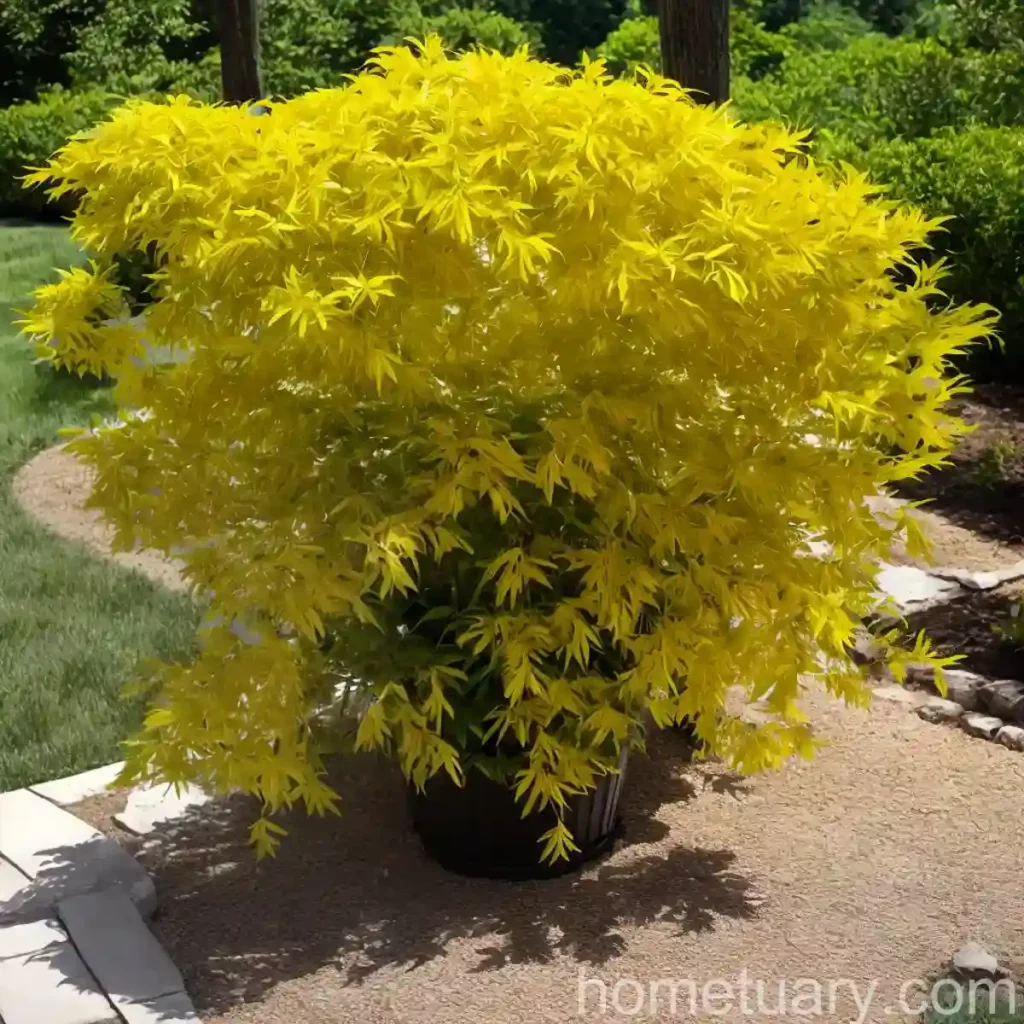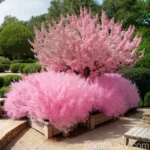Yellowwood (Cladrastis kentukea): A Remarkable Deciduous Tree for Gardens and Landscapes
Yellowwood, scientifically known as Cladrastis kentukea, is a stunning, deciduous tree native to North America. Renowned for its vibrant yellow flowers and elegant appearance, this tree is a valuable addition to gardens and landscapes, providing shade, beauty, and ecological benefits. In this comprehensive guide, we will delve into the culture, uses, care, diseases, and fascinating aspects of the yellowwood tree. Join me as we explore the intriguing world of Cladrastis kentukea!
What is Yellowwood (Cladrastis kentukea)?
Yellowwood, or Cladrastis kentukea, is a species of flowering tree in the Fabaceae family, native to the Eastern United States. It is commonly known as the American yellowwood, Kentucky yellowwood, or simply yellowwood. The tree is esteemed for its outstanding ornamental value, featuring cascading clusters of fragrant, white flowers that mature to a striking yellow hue. Its lustrous, green foliage, smooth gray bark, and picturesque form further enhance its allure, making it a cherished addition to parks, gardens, and urban landscapes.
Key Takeaways – Yellowwood (Cladrastis kentukea)
Let’s begin our exploration of the captivating yellowwood tree by examining some key takeaways highlighting its attributes and significance. Our discussion will cover its cultural requirements, versatile uses, and essential care practices. Additionally, we will unravel intriguing facts about this esteemed tree, shedding light on its ecological role and cultural symbolism.
Culture
Yellowwood (Cladrastis kentukea) thrives in regions with well-drained soil, ample sunlight, and moderate moisture. Its versatile nature allows it to adapt to various soil types, making it suitable for a wide range of landscapes. This tree flourishes in USDA hardiness zones 4 to 8, exhibiting resilience to cold temperatures and adapting well to urban environments.
Uses
The yellowwood tree offers a multitude of uses, serving as an exceptional ornamental specimen, shade provider, and habitat for wildlife. Its exquisite appearance and fragrant blooms make it a favored selection for landscaping, providing an enchanting focal point in gardens and public spaces. Moreover, its dense foliage and broad canopy offer shelter and cooling shade during the summer months.
Water
While yellowwood is moderately drought-tolerant once established, consistent watering is crucial during its initial establishment period, especially in periods of prolonged drought. Adequate moisture is essential for ensuring healthy growth and optimal flowering.
Sunlight
Yellowwood thrives in full sun to partial shade, preferring at least six hours of direct sunlight daily to promote robust growth and abundant flowering.
Fertilizer
When necessary, a balanced, slow-release fertilizer can be applied in early spring to support healthy growth. However, it is important to perform a soil test to assess the nutrient requirements of the site before applying fertilizers.
Soil
The yellowwood tree grows best in well-drained, slightly acidic to neutral soil. It can tolerate a range of soil types, including loamy, sandy, or clay soils, provided they offer good drainage.
Pruning
Pruning is generally minimal for yellowwood, primarily focused on removing dead or damaged branches and shaping the tree when necessary. Pruning is best carried out in late winter or early spring before the onset of new growth.
Propagation
Yellowwood trees are commonly propagated through seeds or cuttings. While seeds may take several years to reach maturity, stem cuttings offer a faster method of propagation, typically rooting within a few months under optimal conditions.
Container Popularity
Due to its moderate growth rate and manageable size, yellowwood is suitable for container cultivation, allowing individuals with limited garden space to enjoy its beauty on patios, decks, or small urban settings.
Common Diseases
While relatively resistant to pests and diseases, yellowwood may be susceptible to certain fungal infections, including powdery mildew and canker diseases, particularly in humid conditions.
Disease Diagnosis
Timely diagnosis and appropriate management of disease symptoms are essential to maintain the tree’s health and vitality. Vigilant inspection and prompt action can help mitigate the impact of diseases.
Common Pests
The yellowwood tree is generally not prone to serious pest infestations. However, occasional encounters with aphids, scales, or caterpillars may occur, necessitating appropriate control measures if pest populations become problematic.
Botanist’s Tips
- When selecting a planting site, consider the mature size and form of the yellowwood tree to ensure adequate space for its development.
- Regular monitoring of soil moisture and drainage is crucial, particularly during the tree’s establishment phase, to prevent waterlogged conditions.
- Maintenance pruning should be performed selectively to maintain the tree’s natural form and encourage optimal flowering.
Fun Facts
- The yellowwood tree, also known as American yellowwood, is a member of the pea family (Fabaceae), belonging to the subfamily Faboideae.
- Yellowwood trees are renowned for their stunning display of pendulous, fragrant flowers in late spring, attracting pollinators and admirers alike.
- In addition to its ornamental value, the wood of the yellowwood tree is highly prized for its durability and attractive grain, often utilized in fine woodworking and artisanal crafts.
Links to External Resources
Stay tuned for the following sections, where we will delve deeper into the multifaceted aspects of the yellowwood tree, exploring its cultural significance, uses, care practices, ecological role, and fascinating attributes. From its enchanting blooms to its ecological contributions, we will unravel the diverse facets of Cladrastis kentukea, shedding light on its rich heritage and ecological importance.
Plant Name: Yellowwood (Cladrastis kentukea)
As we immerse ourselves in the realm of the yellowwood tree, we encounter a wealth of intriguing information and practical insights. Our journey into the world of Cladrastis kentukea will serve as a springboard for enhanced understanding and appreciation of this remarkable species, empowering us to cultivate, conserve, and celebrate its enduring beauty and ecological significance.
The next sections will delve into the remaining topics, connecting readers with in-depth knowledge on the yellowwood tree’s care, diseases, and ecological impact. Through comprehensive exploration, I aim to provide valuable insights for enthusiasts, horticulturists, and nature lovers interested in this captivating species. Stay tuned for an enriching journey into the world of yellowwood!















